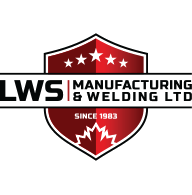What Types of Metal are Used in Welding?
Welding is a common method of manipulating metal that can be utilized to create metal products for a variety of industries. While the welding process may look similar for every project, the process will vary based on the type of metal used. As a leading provider of quality fabrication and welding services, the team at LWS Manufacturing & Welding knows how important it is to understand the qualities of the metal you are working with. That is why we have compiled a list of the types of metal used in welding to help you understand their unique qualities.
Learn about some common sheet metal forming processes and their unique qualities.
5 Common Types of Metal for Welding
The following types of metal are commonly used for welding:
1. Aluminum
Aluminum is one of the most popular materials for welding due to its light weight, strong corrosion resistance, and high conductivity. It is typically used in TIG welding applications, though MIG welding and plasma cutting are also viable options as aluminum is easier to work with than many other metals.
2. Cast Iron
While cast iron is another widely used material, it is best left to experienced welders or experts in the field as it requires specific pre-heating measures to prevent cracking. Though cast iron is not as ductile or malleable as other metals, it is exceptionally durable and can be used for a variety of items including structural materials and consumer goods.
3. Copper
Copper is a popular welding material due to the many benefits it provides. These benefits include impressive thermal and electrical conductivity, exceptional resistance to corrosion, and multiple forms to choose from based on the project.
4. Stainless Steel
Stainless steel is a popular material that is typically alloyed with other metals like chromium to enhance its corrosion resistance. Much like aluminum and copper, there are different types of stainless steel available, each with their own unique qualities.
5. Steel
Steel is widely regarded as the most versatile metal for welding, especially if it has a low amount of carbon. Low-carbon steel is exceptionally ductile while retaining durability, making it easy to work with for a variety of projects. While steel can be welded with almost any method, it must be properly cleaned beforehand.
To learn more about our fabrication and welding services or to discuss the details of your project, get in touch with the team at LWS Manufacturing & Welding. We can be reached through our online contact form and will be happy to answer any questions you may have regarding our services.




